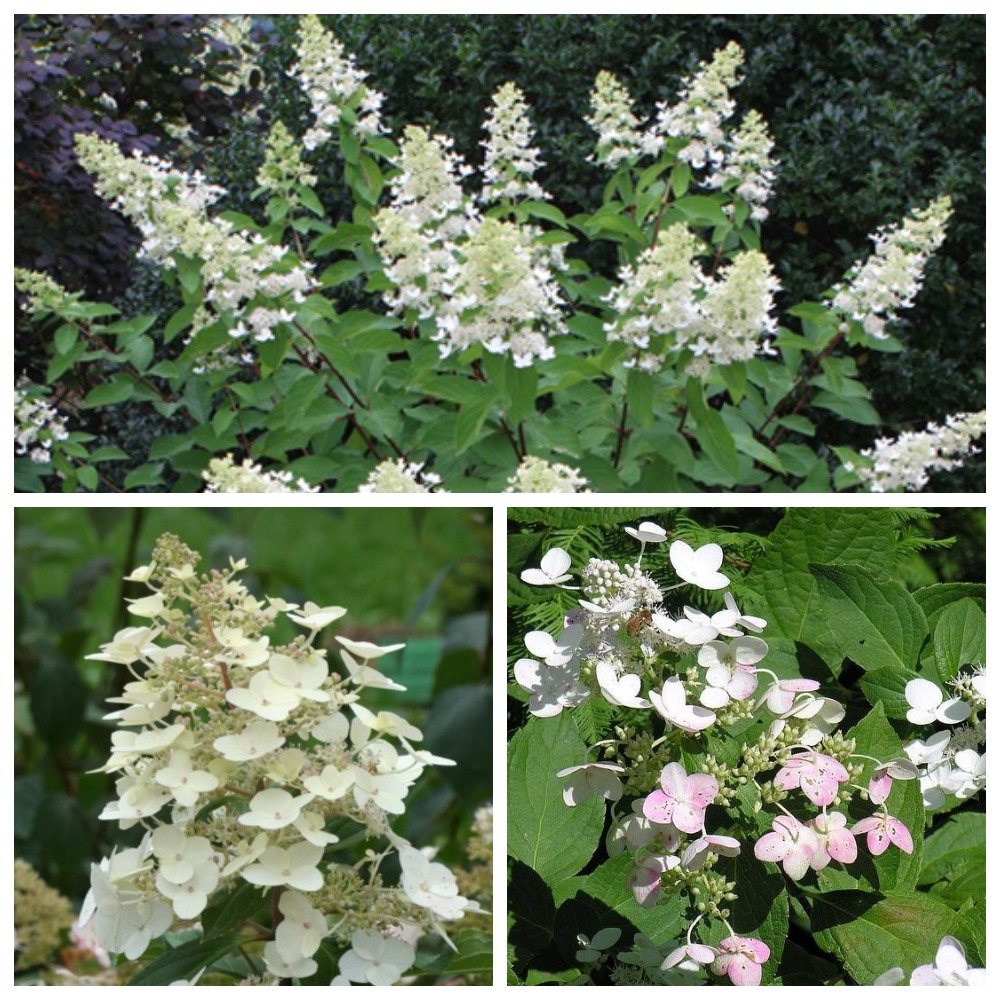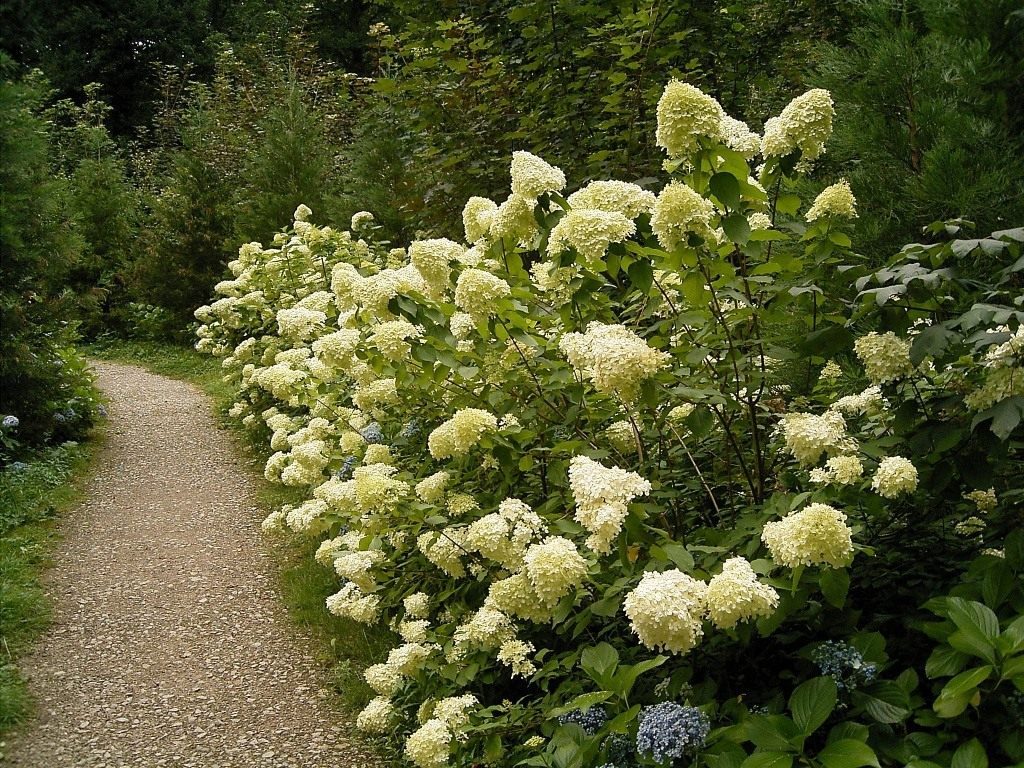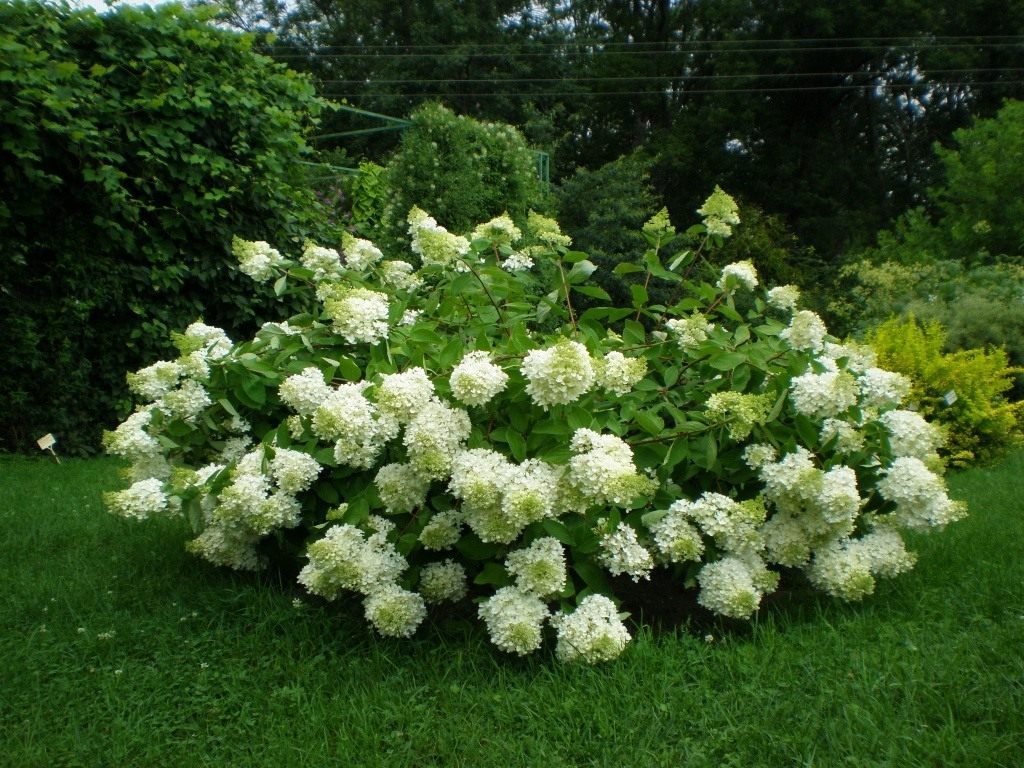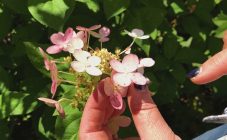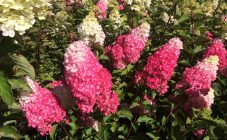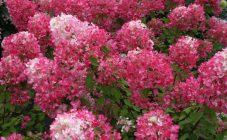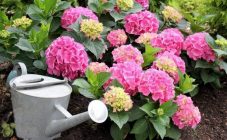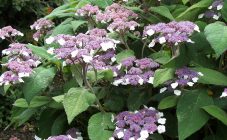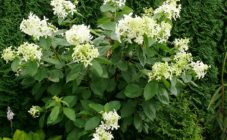Content:
Hydrangea, or hydrangea, is a beautifully flowering shrub loved by gardeners. Delicate clouds of flower brushes create an extraordinary atmosphere at the summer cottage. A variety of species and varieties allows you to create beautiful compositions from bushes blooming all summer. Hydrangea paniculata Unic is one of the varieties beloved by summer residents.
Hydrangea: description
A decoratively blooming hydrangea is difficult to confuse with another plant, so unique are its flowers, collected in inflorescences-shields, balls, panicles. The color of the petals is often white, but varieties with blue, pink, pale purple, pale green flowers and even changing their color over time have been bred.
The leaves of the hydrangea are quite large, depending on the type of edge, they are even, serrate or slightly dissected, saturated green, with clearly visible veins.
The species diversity includes spreading shrubs, trees, lianas. A native of Southeast Asia, hydrangea is easy to grow in areas that do not indulge in warmth. The most suitable species for temperate latitudes are treelike, paniculate, large-leaved. They are also good because they tolerate cold winters well with proper preparation.
What is interesting about panicle hydrangea Unique
Panicle hydrangeas in their natural environment live on Sakhalin, perfectly tolerate the vagaries of the Far Eastern climate, and therefore are most often found in the garden plots of Russia.
Deciduous panicle hydrangea Unique (Hydrangeapaniculata Unique) attracts gardeners with its unique characteristics.
- The size of Unic is impressive: the height of an adult bush reaches three meters, and the span of the crown is five. Gardeners restrain its growth, limiting itself to a height of 2-2.5 m.
- 30-centimeter bunches of flowers on flexible, inclined shoots adorn the plant from the second half of summer until frost. Pink buds open with snow-white flowers, turning pink by the end of flowering.
- The leaves are large, up to 15 cm long, about 8 cm wide, oval-ovate, jagged edges.
- The description of the Unicorn hydrangea will be incomplete if you do not mention the scent of flowers - a pleasant, well-felt next to a flowering bush.
The root system of the variety is superficial and grows rapidly. On fertile soils, root suckers are formed, which are used as planting material.
Of no less interest to summer residents is the fact that Unique, or Unique (often called that way), has since 1993 received the most prestigious award - the Award of Garden Merit of the Royal Horticultural Society, the main organization of gardeners around the world. The very same variety was bred by the Belgian gardeners R. and E. de Belder back in 1950.
How to plant Unicorn hydrangea
The landing site is chosen open, well-lit, in extreme cases - shaded no longer than half the daylight hours. The bush must be protected from the wind, because flexible shoots are fragile. The soil is fertile, moisture-consuming, with a neutral or slightly acidic pH. Although all hydrangeas love moisture, they do not tolerate stagnant water, so the area must be well drained.
They are planted with seedlings grown from cuttings or layering, parts of a bush after dividing according to the instructions:
- The landing pit is prepared in advance. The diameter is chosen from 60 to 80, the depth is 50-60 cm.
- The pit is spilled abundantly with water, 15-20 cm of drainage is laid out.
- The soil mixture for backfill is prepared from humus, garden soil, peat and sand in equal amounts. To the substrate immediately add urea - 25 g, potassium sulfate - 25 g, superphosphate - 60 g. The mixture is thoroughly mixed.
- Seedlings from a container are planted with the ground, placing them in the center of the hole. The soil mixture is poured, lightly ramming.
- If the root system is open, it is carefully examined, damaged and dry parts are removed, and the remaining ones are shortened by a few centimeters. At the bottom of the pit, a mound of the substrate is poured, a seedling is placed on it, spreading the roots along the slopes.
- The nutritious soil mixture is poured so that the root collar is a couple of centimeters below ground level.
- The planted bush is abundantly watered, the trunk circle is covered with organic mulch - leaf humus, needles.
Care features
Hortense Unique in care does not make any special demands. All actions are easy to perform, not time consuming.
Young plants are watered every week until they fully adapt after planting (transplanting). For adult bushes, abundant watering every 3-4 weeks is enough. In extreme heat, the bushes are sprayed with clean water.
2-3 times per season they loosen the soil of the trunk circle. This is done carefully so as not to damage the root system located close to the surface of the earth. Mulching is a good help, retaining moisture and looseness of the soil. They take only organic mulch, sour - high moor peat, coniferous litter.
Top dressing is applied according to the scheme:
- in the spring, before the first buds appear, the bushes need nitrogen fertilizers;
- with the beginning of flowering and in autumn, potassium salts and phosphorus compounds are added.
Pruning is carried out in the spring, before the final awakening of the bush. The most appropriate time is considered the time when the kidneys begin to swell.
Be sure to take into account weather conditions. The awakening of a hydrangea is an irreversible process, even if there are recurrent frosts. Under these circumstances, the pruning is tolerated until warm weather returns. It is also impossible to delay, this will negatively affect flowering.
In the spring, they clean the bush of frozen twigs, shoots that thicken it. Pruning scheme: shoots with flower brushes last year are pruned to the most promising bud; the gain is shortened by a third; completely cut out all thin shoots growing inside the bush; thickening trunks are cut at the root.
When the bush is rejuvenated, all existing trunks are cut off.
Autumn pruning consists in removing peduncles that break under the weight of snow. They do not touch anything else so that the bush does not freeze out in case of abnormal cold weather.
Diseases and pests: how to deal with them
Hydrangea diseases are divided into three groups:
- associated with malnutrition and metabolism;
- fungal;
- viral.
With a lack of trace elements, hydrangeas suffer from chlorosis. It is manifested by the lightening of the leaf plates to a pale green or yellow color, while the veins do not change color.Treatment consists in feeding on the leaf with fertilizers with microelements in a chelated form: Ferrovit, Ferrilene, and other specialized formulations.
Fungal diseases threaten Yunik with excessive thickening of the base of the bush: gray or white rot, powdery mildew, septoria. When signs of infection are detected, the bushes are treated with fungicides - Alirin-B, Fitosporin, other biological products, or they are sprayed with copper sulfate, Bordeaux liquid.
A common viral disease of hydrangea is ring spot. Unfortunately, the disease is not treated, the affected bushes are uprooted and burned.
Of the pests, snails, aphids, rootworm nematodes, and spider mites are the most troublesome for Unicu. It is preferable to collect snails by hand so as not to harm the inhabitants of the site - people, animals, neighboring plants. The universal remedy Akarin of insecticidal and acaricidal action, folk remedies - wormwood, tansy, garlic cope with aphids and spider mites.
It is much more difficult to fight nematodes, since their harmful activity manifests itself rather late, when the bushes are already dying. It is necessary to regularly process the soil under the bushes and the root system of the seedlings with copper sulfate.
Hydrangea Unique in the landscape of a summer cottage
Luxurious bushes look great at their summer cottage. They are often planted on open lawns, forming a bole, in order to enjoy their blooming beauty from all sides. It is easy for them to zone the site, arrange a magnificent hedge. Unique looks great next to the plantings of conifers, chubushnik. Perennial asters, various garden ferns, and hosts make up his charming company.
The spectacular hydrangea Unique, with sufficient care, invariably pleases summer residents with lush, abundant flowering. It is easy to take care of it even for novice gardeners, but the return is always immeasurably greater.
